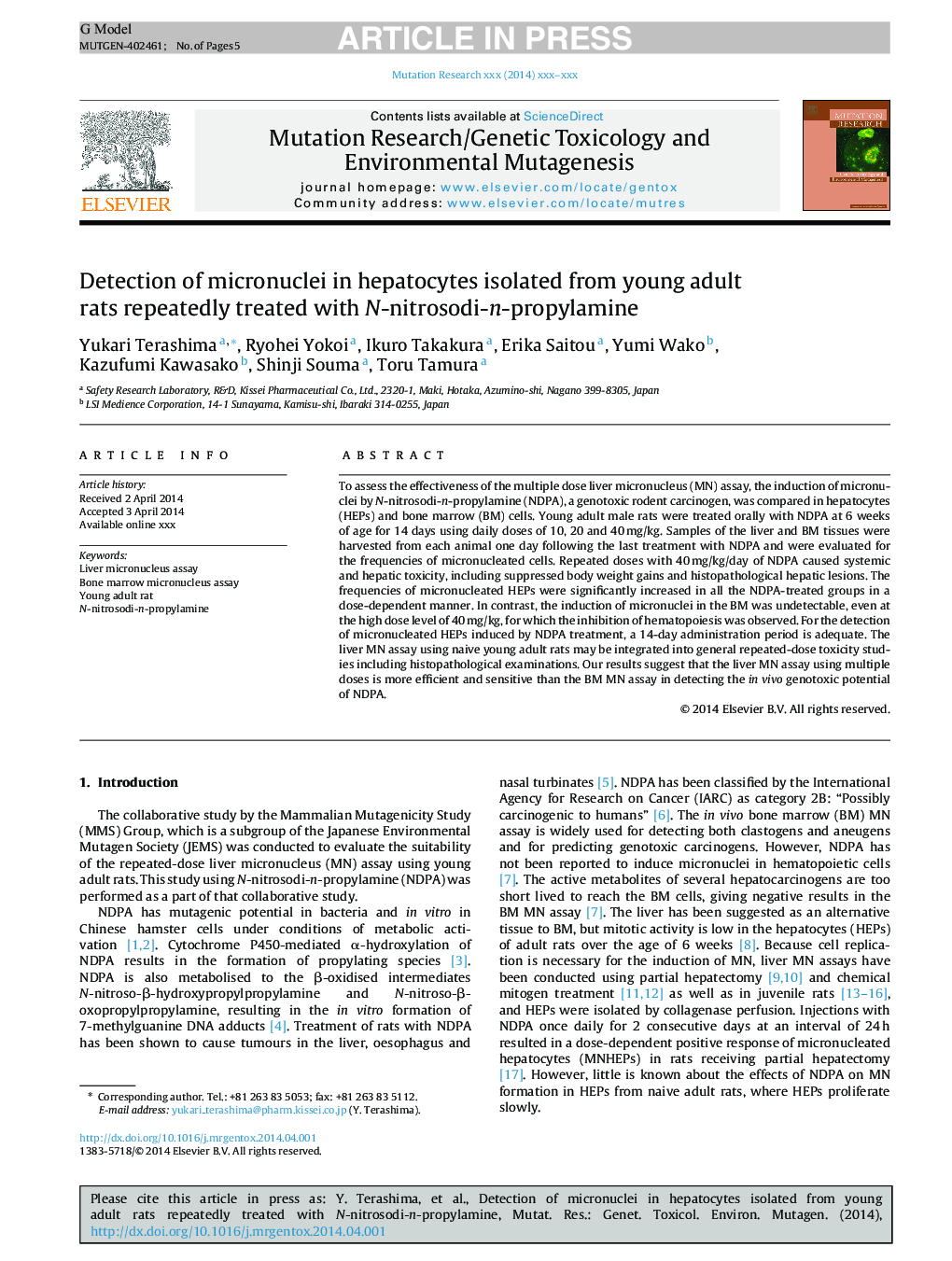| Article ID | Journal | Published Year | Pages | File Type |
|---|---|---|---|---|
| 8456408 | Mutation Research/Genetic Toxicology and Environmental Mutagenesis | 2015 | 5 Pages |
Abstract
To assess the effectiveness of the multiple dose liver micronucleus (MN) assay, the induction of micronuclei by N-nitrosodi-n-propylamine (NDPA), a genotoxic rodent carcinogen, was compared in hepatocytes (HEPs) and bone marrow (BM) cells. Young adult male rats were treated orally with NDPA at 6 weeks of age for 14 days using daily doses of 10, 20 and 40Â mg/kg. Samples of the liver and BM tissues were harvested from each animal one day following the last treatment with NDPA and were evaluated for the frequencies of micronucleated cells. Repeated doses with 40Â mg/kg/day of NDPA caused systemic and hepatic toxicity, including suppressed body weight gains and histopathological hepatic lesions. The frequencies of micronucleated HEPs were significantly increased in all the NDPA-treated groups in a dose-dependent manner. In contrast, the induction of micronuclei in the BM was undetectable, even at the high dose level of 40Â mg/kg, for which the inhibition of hematopoiesis was observed. For the detection of micronucleated HEPs induced by NDPA treatment, a 14-day administration period is adequate. The liver MN assay using naive young adult rats may be integrated into general repeated-dose toxicity studies including histopathological examinations. Our results suggest that the liver MN assay using multiple doses is more efficient and sensitive than the BM MN assay in detecting the in vivo genotoxic potential of NDPA.
Keywords
Related Topics
Life Sciences
Biochemistry, Genetics and Molecular Biology
Cancer Research
Authors
Yukari Terashima, Ryohei Yokoi, Ikuro Takakura, Erika Saitou, Yumi Wako, Kazufumi Kawasako, Shinji Souma, Toru Tamura,
